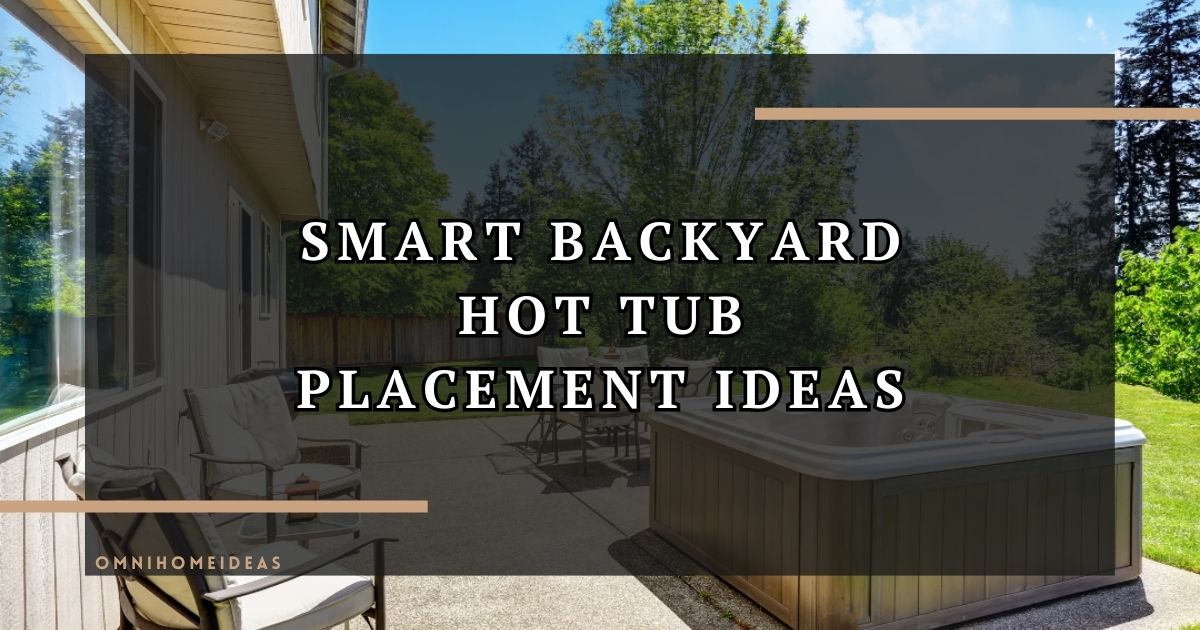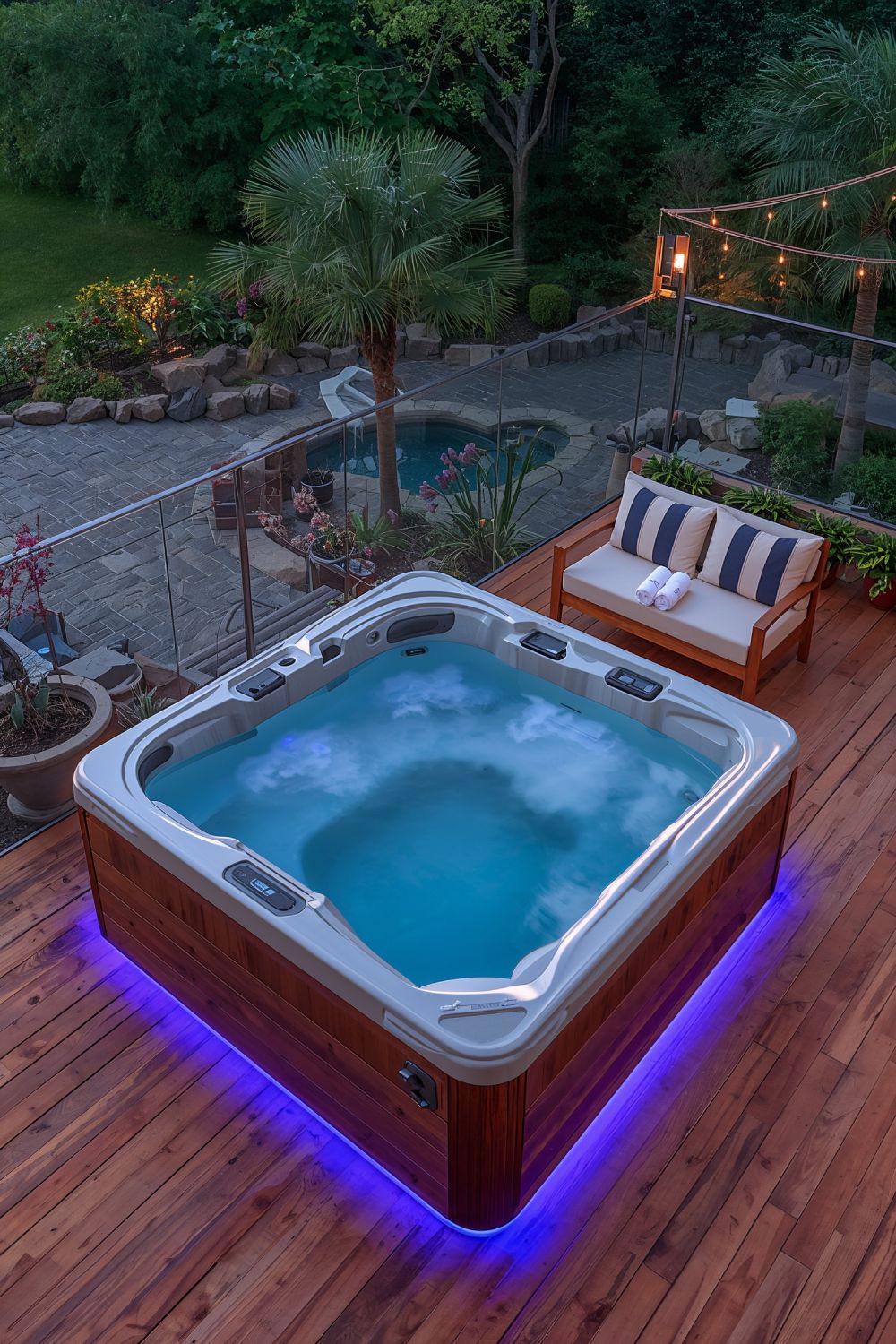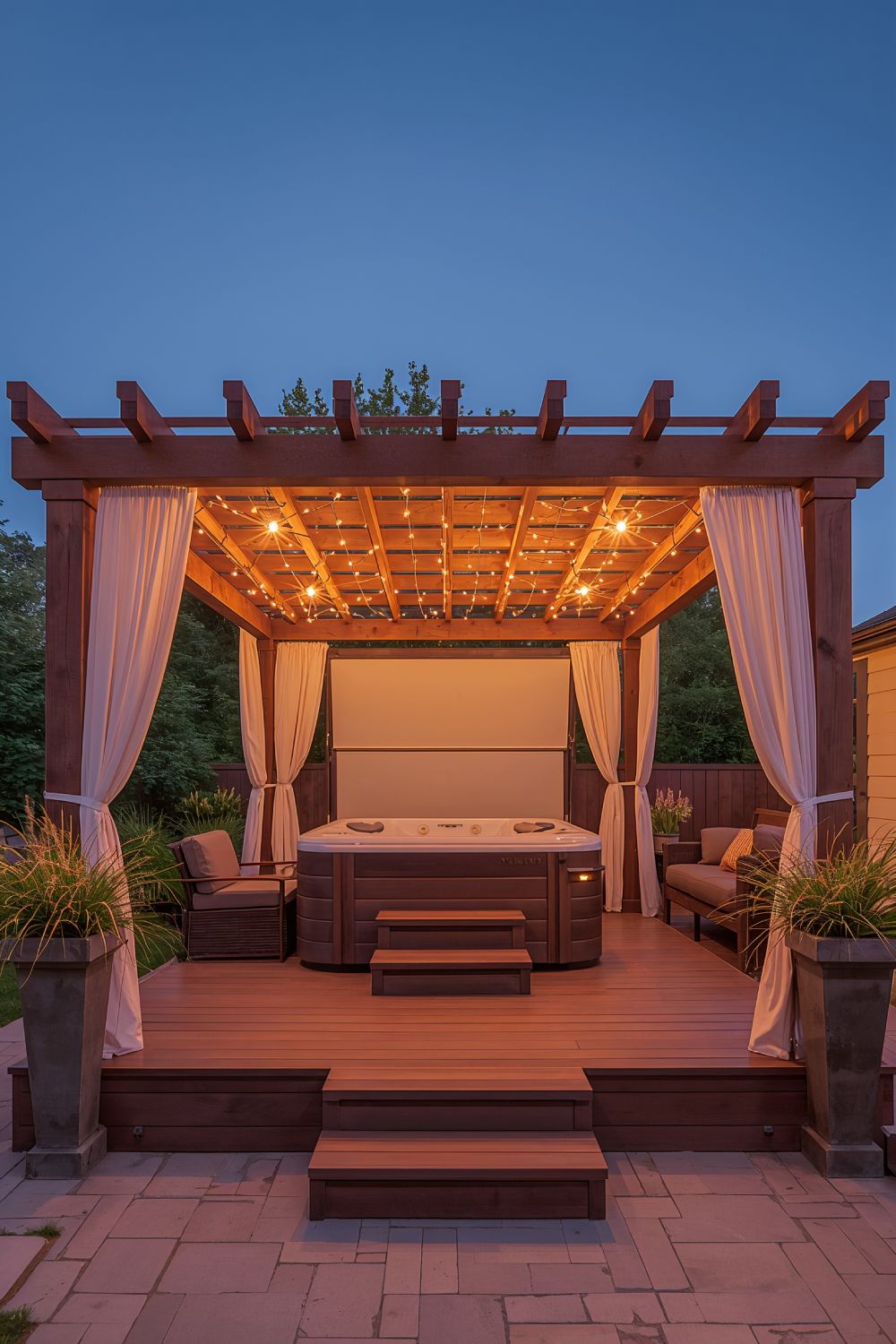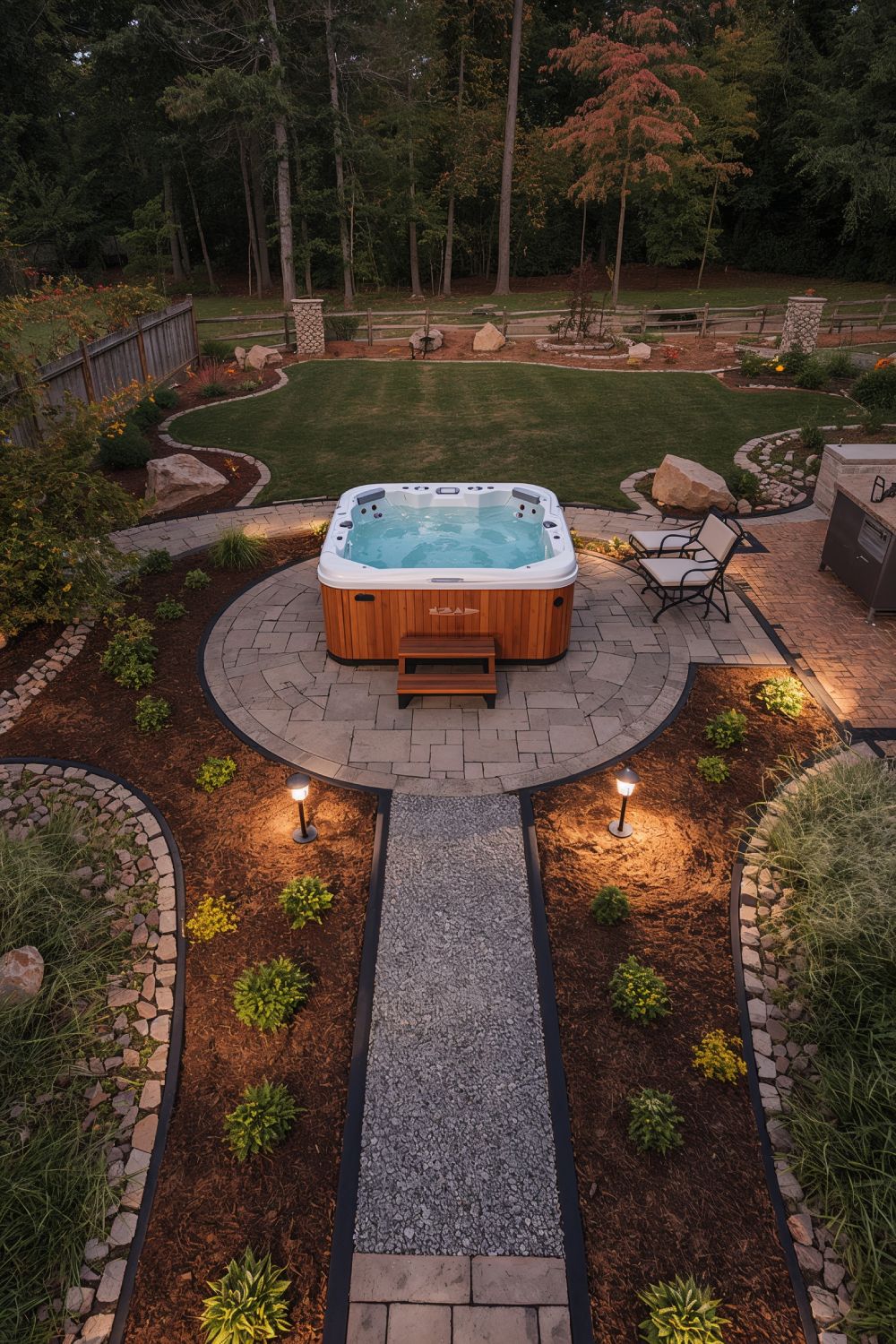Installing a hot tub in your backyard can be one of the best ways to boost your home’s comfort, relaxation, and even property value. But with so many factors to consider, space, privacy, plumbing, and aesthetics, deciding where and how to place your hot tub can feel overwhelming. In this guide, we’ll explore 7 practical and inspiring backyard hot tub placement ideas, complete with expert considerations, pros and cons, and helpful tips for turning your space into a personal oasis.

1. Deck Integration for Seamless Flow
Integrating your hot tub directly into a deck is one of the most visually appealing and functional solutions. Whether it’s built flush into a new or existing deck or raised slightly for easy access, this setup promotes a natural transition between indoor and outdoor living spaces.

Benefits:
- Creates a polished, resort-like aesthetic
- Hides plumbing and electrical components underneath
- Allows for easy custom bench seating and towel storage nearby
Considerations:
- Deck must be structurally reinforced to hold the weight of a filled hot tub (which can exceed 4,000 pounds)
- Must adhere to local building codes and permit requirements
Tip: When designing your deck, consult a licensed contractor and a highly-rated local hot tub company to ensure compatibility between your spa and the structure.
2. Private Garden Nook

If serenity and seclusion are what you’re after, nestling your hot tub into a private corner of your garden may be the ideal option. This placement allows you to enjoy the therapeutic benefits of your hot tub while being surrounded by nature.
Advantages:
- Enhanced privacy with fencing, hedges, or tall shrubs
- Natural ambience created by greenery, flowers, and birdsong
- Helps integrate the spa into the landscape rather than making it stand out
Things to Think About:
- Choose non-shedding plants and trees to avoid debris in the water
- Accessibility during winter may be more difficult if placed far from the house
Pro Tip: Use gravel or stepping stones to create a natural path for year-round usability without muddy footprints.
3. Covered Pergola or Gazebo Setup

A hot tub beneath a pergola or gazebo combines function with design elegance. Adding a structure over the hot tub not only protects it from rain, snow, and sun but also enhances its visual presence in your yard.
Why It Works:
- Offers partial or full shade and shelter
- Adds architectural beauty to the space
- Option to add string lights, curtains, or hanging plants for ambiance
Watch Out For:
- Proper ventilation is crucial to avoid moisture damage or mildew
- Roof height must be adequate for steam clearance and accessibility
Suggestion: Opt for weather-resistant materials such as treated wood, vinyl, or powder-coated aluminum to maximize durability.
4. Sunken Patio Design

A sunken patio with a hot tub is a sleek, contemporary solution perfect for modern backyards. This approach typically involves partially or fully embedding the spa into a recessed area, allowing for a minimalist look and easy entry.
Benefits Include:
- Sleek design with clean lines and unobstructed views
- Easy entry without the need for stairs
- Maintains better heat retention with partial surrounding insulation
Challenges:
- More excavation and concrete work are required
- Drainage must be carefully managed to prevent water pooling around the unit
Best Practices:
Install a French drain or trench system to route rainwater away from the hot tub pit. Consider non-slip materials like textured stone or concrete for safety.
5. Close to the House for Convenience

Placing the hot tub adjacent to your house, like just outside a back door or off a bedroom, makes sense for accessibility and ease of use, especially in colder climates.
Advantages:
- Short walking distance in cold or wet weather
- Easier access to indoor amenities like bathrooms, changing rooms, or kitchens
- Typically, simpler plumbing and electrical hookups
Important Reminders:
- Maintain a buffer zone of 18 to 24 inches from the home’s siding to prevent moisture damage
- Ensure windows nearby are treated or tinted for privacy, or install blinds if needed
Tip: Consider placing the hot tub near a sliding glass door or walkout basement for ultimate convenience.
6. Freestanding Focal Point

If you have ample space, placing your hot tub as a standalone feature in the middle or open corner of the yard creates a bold focal point. This method works well for landscaped yards or larger properties.
Why You Might Choose This:
- Full access from all sides
- Potential for panoramic views of the yard or sky
- Can be designed with dramatic lighting, rock features, or surrounding plant beds
Key Considerations:
- Must have a stable base, such as a concrete pad or reinforced patio pavers.
- Electrical and plumbing lines will need to be extended, which may increase installation costs.
Design Tip: Surround the area with low-level lighting and pathway pavers to create an inviting retreat during the evenings.
7. Inside a Hot Tub Enclosure

If you’re looking for a year-round experience with added privacy and protection, building an enclosed hot tub room or sunroom is a top-tier choice. Though more costly, it combines comfort, usability, and long-term durability.
Advantages:
- Weatherproof, making it ideal for winter use
- Maximum control over temperature, lighting, and ambiance
- Adds value to the home as an indoor-outdoor hybrid amenity
Drawbacks:
- More expensive due to building materials, insulation, and ventilation systems
- May require city permits and approval from a contractor or architect
Insider Tip: Ensure that the space is properly ventilated to handle humidity. Use mildew-resistant materials on walls and ceilings.
Final Thoughts
When choosing where to place your hot tub, there’s no one-size-fits-all answer. Your backyard layout, lifestyle, and budget will play a key role in your decision. Whether you want a peaceful escape nestled in your garden or a chic, deck-integrated spa zone, thoughtful planning can help you create a beautiful and functional retreat. Always consider the long-term maintenance, accessibility, and local climate in your design.
Before committing, consult with experienced installers and contractors who can evaluate your space and recommend the best setup based on safety, drainage, privacy, and design.

